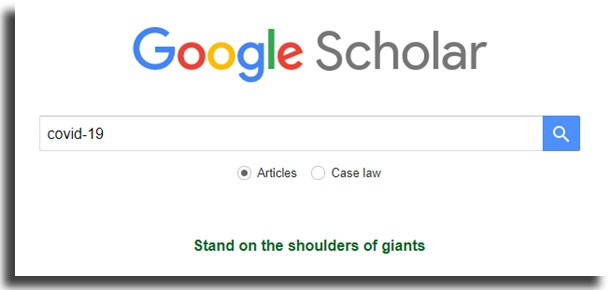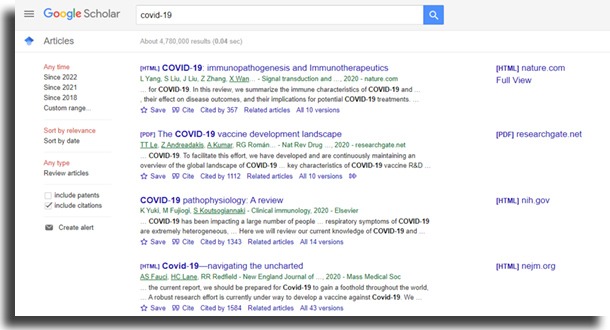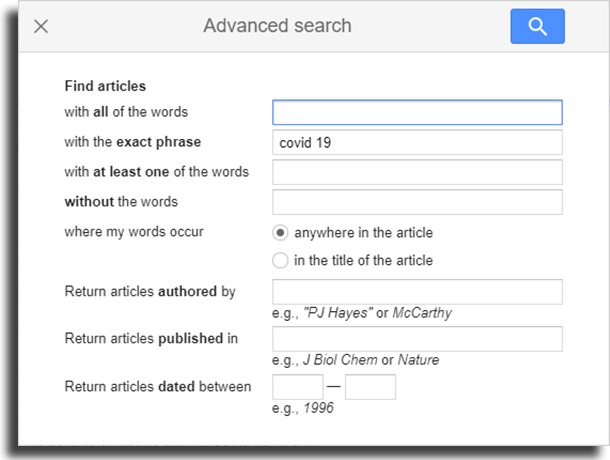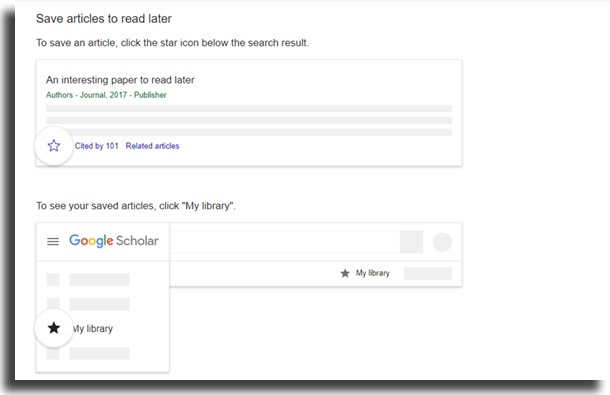Check out our complete guide and find out everything there is to know about it, as well as how to use it!
1. What is Google Scholar?
Google Scholar is a completely free search service offered by Google. It indexes entire texts and metadata from scholarly literature from a variety of journals, in many formats and across any discipline. It was released in beta in 2004 and, in the 18 years since then, it has become an extremely good and complete service through which you can find scientific articles, books, theses, abstracts, dissertations, and pre-publication libraries, and much more. There is no official number on the size of Google Scholar’s database, but researchers estimate it has around 389 million documents, articles, citations, and patents, making it the largest academic research service in the world. The only thing really criticized about it is the lack of a really effective verification process of the journals that appear in the results, which ends up resulting in the possibility of finding unreliable or even predatory sources.
Features
In addition to being able to find the best articles on Google Scholar, it is possible to use one of the many other functions offered by it for various other purposes.
Find academic information in any language you want, from any country in one place; Explore works related to what you’re reading, citations, authors, and publications; Have easy access to complete documents through its virtual library; Receive frequent updates on the latest news in areas of research you are interested in; Know who is citing your publications through your public profile; See documents ranked as they would be if they were ranked by researchers, with the best sources always at the top; Have your own virtual library where you can store and find the articles that most interest you, almost like a Google Drive for academic literature.
2. How to find the best articles on Google Scholar?
Having this prior knowledge about Google Scholar and knowing why it is really worth using it, we will teach you how to use it to find the best result for your search.
How to use it?
The first step in knowing how to use Google Scholar is to go to the official website of the platform through the link in any of the best web browsers, whether on your computer or on your Android smartphone and on your iPhone.
You will come across a very familiar interface, similar to the Google search homepage. To search, it is only necessary that you enter the desired term. With that, you will get all the results that Google can find. There is also the possibility to filter to change the results and how they are displayed:
Filter by date: Results can be from any date by default. You can change this by selecting a specific year or typing a period; Change sorting: The ordering of results is by relevance by default. If you prefer, you can also ask them to be shown by date, from newest to oldest; Change language: Results can be in any language by default. If you want to guarantee that you will understand them without having to use Google Translate, you can limit the results to a specific language only; It is also possible to include or exclude patents and citations by checking or unchecking the boxes.
Advanced search
It is highly recommended that you use Google Scholar’s advanced search to further refine the results and find exactly what you are looking for. Activate it by opening the menu represented by three lines in the corner of the screen and then clicking on “Advanced Search”.
There are the following search refinement options in Google Scholar through “Advanced Search”:
Find articles: With all of the words: Through this option, all results will have ALL the words you’ve written; With the exact phrase: Through this option, the results will necessarily have the EXACT PHRASE you wrote, without any changes; With at least one of the words: Through this option, the results will have at least ONE of the searched words, without necessarily containing all of them; Without the words: Through this option, the words written here will be EXCLUDED from the results; Where my words occur: Through this option, you can determine whether you want the search terms to be present only in the title or if they can be anywhere on the page, either title or body. Return articles authored by: Through this option, the search will only return results authored by people with the name here; Return articles published in: Through this option, the search will only return results that have been published in the magazines and newspapers you searched here; Return articles dated between: Finally, through this option, the search will only return results that have been published between the two years entered.
My library
When you find the articles you were looking for on Google Scholar, you can add them to your library for easy access if you haven’t finished reading them, or simply want to review them. Just click on the star icon below them to do this. Access your library by clicking on “My Library”, just below your account.
Create alerts
You can also create alerts through Google Scholar so that whenever news about a topic is released, you’ll know. This can be done via the “Create Alert” button on the left side of the screen. Then, you’ll have to configure it, deciding which terms to include, which email address to receive alerts from, and how many results you want per notification.
What did you think of the complete guide to Google Scholar?
Tell us what you think about this excellent Google tool and what you think of our guide.





